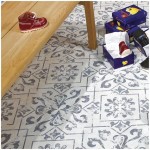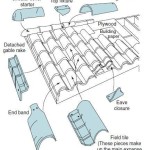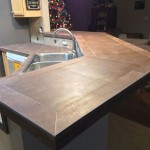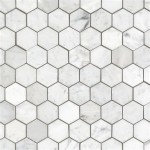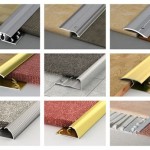How to Remove Silicone from Tiles: A Comprehensive Guide
Silicone sealant is a ubiquitous material used in bathrooms, kitchens, and other areas where a waterproof barrier is needed. Its adhesive properties and flexibility make it ideal for sealing gaps around tiles, preventing water damage and maintaining a clean aesthetic. However, silicone can degrade over time, becoming discolored, cracked, or simply unsightly. Furthermore, a need to replace tiles or re-grout necessitates the removal of existing silicone sealant. The removal process can be challenging due to silicone's strong adhesion and resistance to many solvents. This article provides a comprehensive guide on how to effectively remove silicone from tiles, covering different methods, tools, and safety precautions.
Effective silicone removal requires a methodical approach. Attempting to forcibly rip the sealant away often results in a fragmented, messy result, potentially damaging the tile surface. The key is to soften or weaken the silicone's bond before attempting physical removal. This can be achieved through a combination of mechanical and chemical methods, depending on the age, condition, and thickness of the silicone.
Preparing for Silicone Removal
Before commencing the removal process, adequate preparation is crucial to protect the surrounding area and ensure personal safety. The following steps should be undertaken:
Surface Protection: Cover any surrounding surfaces that could be vulnerable to scratches or chemical damage. This includes countertops, sinks, and nearby walls. Using painter's tape and plastic sheeting provides a protective barrier against accidental damage from tools or cleaning solutions.
Ventilation: Ensure adequate ventilation in the work area. Some silicone removal products contain strong solvents that can release fumes. Opening windows and using a fan can help dissipate these fumes and maintain air quality.
Personal Protective Equipment (PPE): Wearing appropriate PPE is essential to prevent skin and eye irritation. This includes gloves (nitrile or rubber are recommended) and eye protection, such as safety glasses or goggles. A respirator may be necessary if using products with strong fumes, especially in poorly ventilated areas.
Gathering Necessary Tools: Having the correct tools readily available will streamline the removal process. Essential tools include a sharp utility knife or scraper, a silicone removal tool (specifically designed for this purpose), a heat gun or hairdryer (optional), a solvent-based silicone remover, cloths or paper towels, and a vacuum cleaner or brush for cleaning up debris.
Mechanical Removal Techniques
Mechanical removal involves physically cutting and scraping away the silicone sealant. This is often the first step in the removal process, particularly for thick or heavily adhered silicone. Several techniques can be employed:
Using a Utility Knife or Scraper: A sharp utility knife or scraper is used to carefully cut along the edges of the silicone bead, separating it from the tile surface. Applying consistent pressure and maintaining a shallow angle is essential to avoid scratching the tiles. Repeated scoring of the silicone along the edges will weaken the bond and facilitate removal. For thicker silicone, multiple passes with the knife may be necessary.
Employing a Silicone Removal Tool: Specialized silicone removal tools are designed with a curved blade or hook that allows for precise removal of the sealant without damaging the surrounding tiles. These tools often feature ergonomic handles for improved grip and control. The tool is used to carefully lift and peel away the silicone, following the contours of the tile.
Leveraging Heat (Optional): Applying heat can soften the silicone, making it easier to remove mechanically. A heat gun or hairdryer can be used to gently warm the silicone. Caution should be exercised to avoid overheating the silicone or the surrounding tiles, as excessive heat can cause damage. Short bursts of heat followed by immediate attempts to scrape or peel the silicone will often yield better results.
Addressing Stubborn Areas: In some cases, mechanical removal alone may not be sufficient. Stubborn areas of silicone may require a combination of mechanical and chemical methods. After attempting mechanical removal, any remaining silicone residue should be treated with a silicone remover. Let the remover dwell for the recommended time before attempting further mechanical removal.
Cleaning Up Debris: As the silicone is removed, it is important to clean up the debris regularly. This prevents the loosened silicone from re-adhering to the surface and keeps the work area clean and safe. A vacuum cleaner or brush can be used to collect the debris.
Chemical Removal Techniques
Chemical removal involves using solvents to dissolve or soften the silicone sealant, making it easier to remove. Silicone removers are specifically formulated to break down the chemical bonds of the silicone, weakening its adhesion. The effectiveness of a silicone remover depends on its formulation and the type of silicone being removed.
Selecting a Silicone Remover: Various silicone removers are available, ranging from generic solvents to specialized formulations. Reading the product label carefully is crucial to ensure compatibility with the tile material and to understand the application instructions and safety precautions. Some removers may be more effective on certain types of silicone or in specific applications. Water-based silicone removers generally have fewer fumes and are considered safer to use, but they may be less effective than solvent-based removers.
Application of the Remover: Apply the silicone remover according to the manufacturer's instructions. This typically involves applying a generous amount of the remover to the silicone residue and allowing it to dwell for a specified period. The dwell time allows the solvent to penetrate and soften the silicone. Some removers may require multiple applications for thick or stubborn silicone.
Testing in an Inconspicuous Area: Before applying the remover to a large area, it is advisable to test it in an inconspicuous area to ensure that it does not damage or discolor the tile. This is particularly important for porous or delicate tiles. Apply a small amount of the remover to a hidden corner and observe for any adverse reactions. If discoloration or etching occurs, discontinue use of the remover.
Scraping and Wiping Away Residue: After the dwell time, use a scraper or cloth to remove the softened silicone residue. The silicone should be significantly easier to remove than before the application of the remover. Repeat the application and removal process if necessary. Once the majority of the silicone has been removed, wipe the area clean with a damp cloth to remove any remaining remover residue.
Dealing with Remaining Residue: Even after using a silicone remover, some residue may remain on the tile surface. This residue can often be removed with a combination of scrubbing and further applications of the remover. A stiff-bristled brush can be used to scrub the residue, followed by wiping with a clean cloth. In some cases, a mild abrasive cleaner may be necessary, but caution should be exercised to avoid scratching the tile surface.
Post-Removal Cleaning and Preparation
After successfully removing the silicone sealant, it is important to thoroughly clean the area and prepare it for new sealant or grout. This ensures proper adhesion of the new material and prevents future problems.
Removing Remaining Residue: After the bulk of the silicone is gone, a thin film of residue might still cling to the tiles. This residue can hinder the adhesion of new sealant. Use a specialized silicone residue remover or mineral spirits to thoroughly clean the area. A clean, lint-free cloth is ideal for this step.
Cleaning the Surface: Clean the tile surface with a mild detergent and water to remove any dirt, grease, or other contaminants. Rinse thoroughly with clean water and allow the surface to dry completely. A degreasing cleaner may be necessary if the area is particularly greasy.
Drying the Area: Ensuring the area is completely dry is crucial before applying new sealant. Moisture can interfere with the adhesion of the sealant and promote mold growth. Allow the area to air dry for several hours, or use a clean, dry cloth to thoroughly dry the surface.
Preparing for New Sealant or Grout: Before applying new sealant or grout, inspect the area for any damage or imperfections. Repair any cracks or chips in the tiles or grout. Apply painter's tape along the edges of the tiles to create a clean, straight line for the new sealant. This will also protect the tiles from smudges or excess sealant.
Choosing the Right Sealant: When selecting new sealant, choose a high-quality silicone sealant that is specifically designed for use in wet areas. Look for sealants that are mold and mildew resistant to prevent future problems. Consider the color of the sealant to match the existing tile or grout.
By following these steps, the removal of silicone from tiles can be accomplished safely and effectively, leaving a clean and prepared surface for new sealant or grout.

How To Remove Silicone From Tiles A Step By Guide
How To Remove Silicone Sealant From Tile Glass Metal And Wood

How To Remove Silicone From Tiles A Step By Guide
How To Remove Silicone Sealant From Tile Glass Metal And Wood

How To Remove Silicone Sealant Daqiq Chimie Co
How To Remove Silicone Sealant From Tile Glass Metal And Wood

How To Remove Silicone From Tiles
How To Remove Silicone Sealant From Tile Glass Metal And Wood

Removing Silicone Caulk This Old House

How To Remove Silicone Sealant From Tiles 100 Characters
Related Posts

